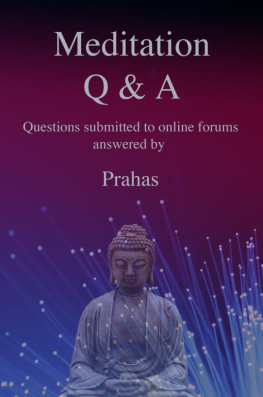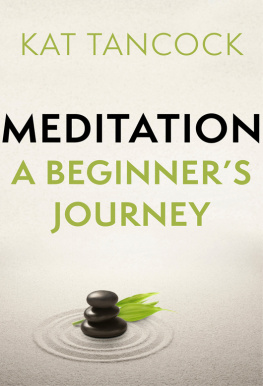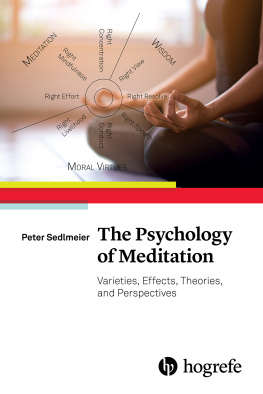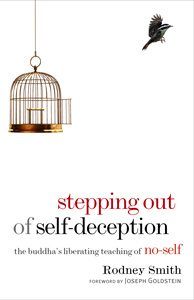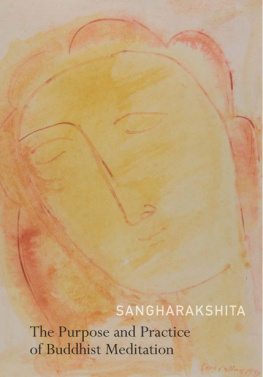Meditation Q & A
Questions submitted to online forums,
answered by
Prahas
Esmerelda Publishing Company
Copyright 2014 by Prahas
Smashwords Edition
Meditation Q & A. Copyright 2014 by Prahas. Allrights reserved. No part of this book may be used or reproduced inany manner whatsoever without written permission except in the caseof brief quotations embodied in critical articles and reviews. Forinformation send email to foundpra [at] yahoo [dot] com.
First Edition
Designer: Prahas
Dedication
This work is dedicated tothose who:
* touch my heart;
* receive my gifts;
* heal my wounds;
* look over me with patience and love while Igrow up;
* sit in silence with me.
You know who you are.
The small tome is also dedicated to Mom, whose firstand strongest impulse is always towards family and a mothersnurturing: thank you for your above-and-beyond support.
Further dedications are extended to my stepfather,Martin Buddha Moskof, who egged me on when my creative resolveflagged.
The transformers who worked with me for nine years inour school of meditation will undoubtedly recognize their words andideas in my writings. I am forever grateful to each of them, and Ihope with this volume I have played a role in breathing life intotheir teachings.
At the highest level,
this work is dedicated to my
Beloved Master,Osho.
Love.
Acknowledgements
Many thanks to thehundreds of meditators, new and practiced, who asked theirquestions in a corner of cyberspace where I could find them andreflect on them and respond to them.
These unknown angels gave me a gift of immense size:the opportunity to allow words describing love and meditation toflow out of the body-mind-Being named Prahas towards other humanbeings.
This flowing created warmth for me during some of thecoldest mornings I have experienced.
So thank you, one and all!
Request
If you are pleased with this book, feel free tosupport a starving author by making a donation to my PayPalaccount. For simple instructions, see the end of the book. You donot need a PayPal account to complete your random act of kindness.Thank you, and in any event, enjoy the read!
Introduction
One morning in early2010 an idea came to me. At that time, I had been practicingmeditation for 17 years. I had been a full-time student in a schoolof meditation for nine of those years. And I had spent six of thoseyears in near-total solitude.
I had been reading about question and answer websites on the Internet: places where people from all over theworld go to post their questions on any subject and where others goto answer them. I thought, "why not go online and see ifpeople are asking about meditation?"
Sure enough, they were.
Twenty one months later I had answered close to 400questions. Most of them address questions which 'newbies'(beginners to meditation) have posted. A few delve intodeeper waters.
One thing I discovered as I roamed the Q&A forumsis there are many people out there who have heard of or read aboutmeditation, and who are trying it out on their own. Many aretrying various techniques with no support from experiencedpractitioners, and some are getting into trouble. Anexample:
Kundalini meditation really messed me up. THISMEDITATION IS THE REAL DEAL AND NOW I HAVE ALL THIS STRESS ANDANXIETY BECAUSE OF IT. WHAT DO I DO NOW?
One goal of this book is to provide grounded guidanceto those meditators experimenting in the privacy of theirhomes.
My master (guide into the intricacies of meditation)defined a clear distinction between a master and a teacher. Amaster is one who can help transform a disciple as he progressesalong the pathless path of meditation. A teacher may be ableto speak about what will happen, but she is incapable of assistingin the transformation. If a teacher can describe in words abeautiful mountain trail, and some of the sights one will see alongthe way, a master can function as a mountain guide, walkingalongside the hiker as he makes the arduous ascent to thesummit.
I am not a master. I am a teacher. As anew student sits on the river's edge, dangling his feet into thewater, testing its temperature, I can alert him to what he willexperience when he learns to swim. When he leaves the river'sshore, wades into the water and finally allows the current to takehim, he then will be ready for a master.
And in keeping with the tradition of the greatmasters down through the ages, when the student is ready, themaster will appear, prepared to assist in the transformations fromstudent to disciple, from disciple to devotee, and from devotee toenlightened one.
Some of the answers have "Questioner's Comments"after them. One of the web sites I worked on allowed the questionerto choose a best answer (from among all of the answers posted), andthen to comment on it. It is this comment that is re-printedhere.
I have taken the liberty of editing answers which,upon re-reading, did not do the question justice. The questionshave been reprinted verbatim.
All web citations within were active links as ofSeptember 1, 2011.
Table of Contents
Speak of Love's Glory?
How do you dare?
I gave my mouth to God
To do with what was wanted;
For years, it was buried
At the bottom of the sea;
Today it is birthed,
Brimmed with living pearls. [1]
0 - Two Meditation Techniques Mentioned Throughout the Book
"'Love yourself,' saysBuddha. And then immediately he adds, 'and watch.' The firstrequirement is to love yourself, and then watch. If you don't loveyourself and start watching, you may feel like committingsuicide.
"Many Buddhists feel like committing suicide becausethey don't pay attention to the first part of the sutra, theyimmediately jump to the second: watch yourself. In fact, I havenever come across a single commentary on The Dhammapada, on thesesutras of the Buddha, which has paid any attention to the firstpart: love yourself.
"Socrates says, know thyself,' and Buddha says,love thyself.' And Buddha is far truer, because unless you loveyourself you will never know yourself - knowing comes only lateron. Love prepares the ground." [2]
--Osho
Throughout the book, I will be referring questionersto a meditation technique called "gibberish." I will define ithere, and simply refer to it by name in the answers below.
In gibberish, you make all kinds of sounds, as longas they are not a real language. Pretend you are talking in alanguage no one knows. Make loud sounds, soft sounds, angry sounds,sad sounds, just create any non-word sounds you like. Really getinto it! And move your body around too.
After five or ten minutes, stop, and sit silently forfive minutes, becoming aware of your thoughts, feelings, orsensations. Just watch. Do not try to change or fix anything. Donot try to stop the mind. Love yourself, and accept whateverhappens from your heart.
After a month, if you feel to, increase the time foreach section by five minutes. Let the new duration settle for amonth. Over time, you may end up doing 30 minutes of catharting and30 minutes of silence.
You may be wondering, "why gibberish?" Theenlightened master Osho explains the need for active meditations inthe modern world: "In Buddha's time, dynamic methods of meditationwere not needed. People were more simple, more authentic. Theylived a more real life. Now, people are living a very repressedlife, a very unreal life.... Many incomplete experiences go onbeing collected, piled up inside their minds.
"Just sitting directly in silence won't help. Themoment you will sit silently, you will see all sorts of thingsmoving inside you.... First throw those things out.... All thedynamic meditations are preparatory to real meditation. They arejust basic requirements to be fulfilled so that meditation canhappen."[3]

